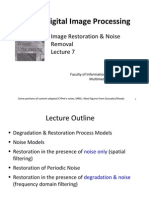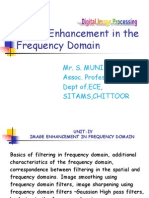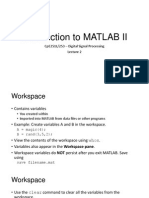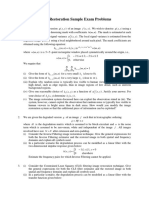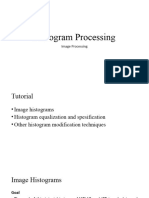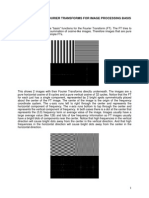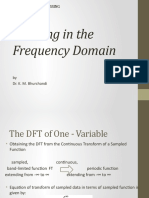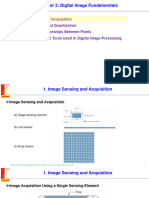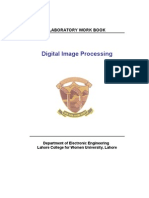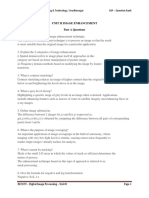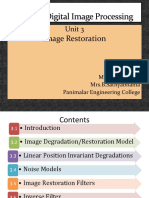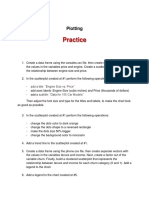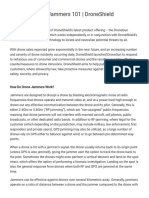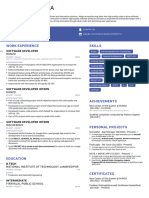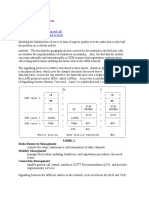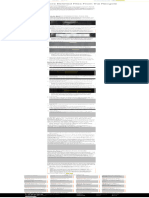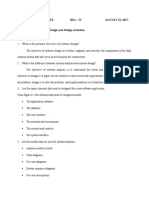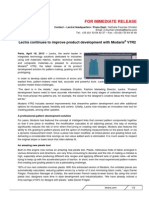0% found this document useful (1 vote)
223 views39 pagesLecture 4. Image Restoration
This document provides an overview of image restoration and reconstruction techniques. It discusses models of the image degradation and restoration process, important noise models, and various spatial and frequency domain filtering approaches for noise reduction. Spatial filters covered include mean, order-statistic, and adaptive filters. Frequency domain techniques like bandreject, bandpass, and notch filtering are described for periodic noise removal. Linear, position-invariant degradations are defined and methods for estimating the degradation function are mentioned. Examples are given to demonstrate different filtering results.
Uploaded by
enkhtsetseg enkhbatCopyright
© © All Rights Reserved
We take content rights seriously. If you suspect this is your content, claim it here.
Available Formats
Download as PDF, TXT or read online on Scribd
0% found this document useful (1 vote)
223 views39 pagesLecture 4. Image Restoration
This document provides an overview of image restoration and reconstruction techniques. It discusses models of the image degradation and restoration process, important noise models, and various spatial and frequency domain filtering approaches for noise reduction. Spatial filters covered include mean, order-statistic, and adaptive filters. Frequency domain techniques like bandreject, bandpass, and notch filtering are described for periodic noise removal. Linear, position-invariant degradations are defined and methods for estimating the degradation function are mentioned. Examples are given to demonstrate different filtering results.
Uploaded by
enkhtsetseg enkhbatCopyright
© © All Rights Reserved
We take content rights seriously. If you suspect this is your content, claim it here.
Available Formats
Download as PDF, TXT or read online on Scribd
/ 39

